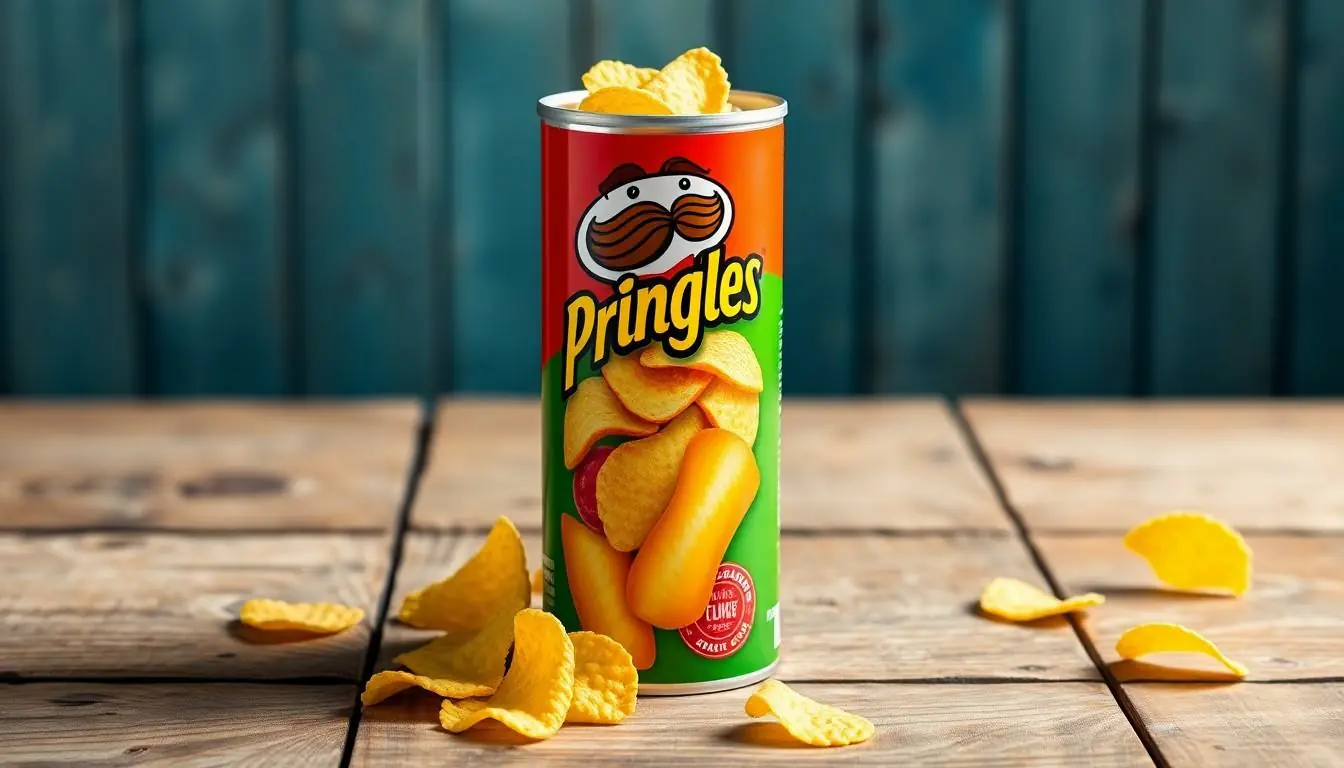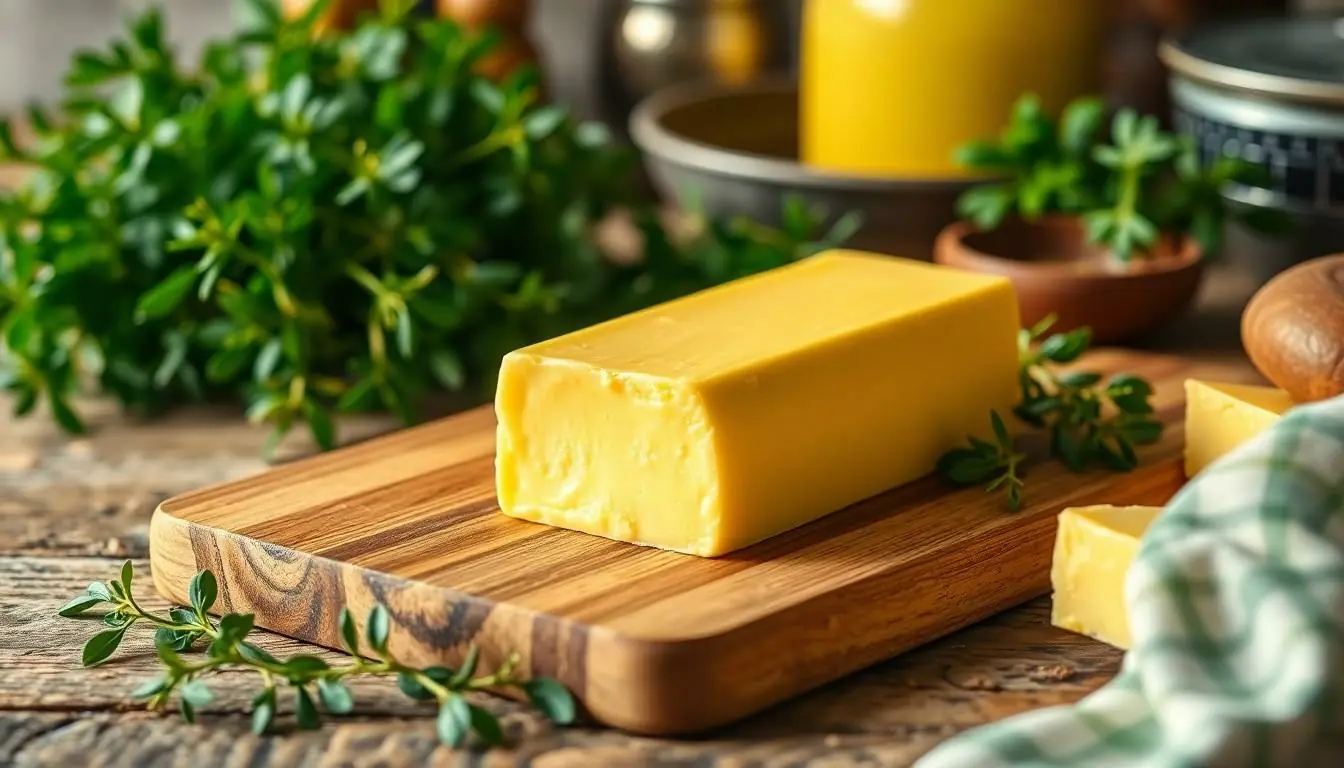When it comes to snacks, Pringles are the ultimate crunch companions. With their iconic shape and irresistible flavors, these potato crisps have a way of sneaking into every party, movie night, and late-night binge. But while they might be the life of the snack aisle, what’s hiding behind that colorful nutrition label?
Table of Contents
ToggleOverview of Pringles
Pringles stands out as a snack with a distinct shape, known for its stackable chips. Each chip features a uniform curvature, which enhances the snacking experience. A wide selection of flavors, ranging from classic Original to bold options like BBQ and Sour Cream & Onion, appeals to diverse palates.
Nutritionally, a serving of Pringles typically contains 150 calories. This figure includes 8 grams of fat, affecting daily fat intake. Sodium levels often reach around 250 milligrams per serving, contributing significantly to daily sodium consumption. It contains less than 1 gram of sugar, making it a relatively low-sugar snack option.
Ingredients for Pringles include potatoes, corn flour, and various seasonings. These components contribute to the crispy texture and flavor profile. Artificial flavors and preservatives often enhance the taste and extend shelf life.
Understanding the nutrition label is essential for those monitoring dietary intake. Ingredients and nutritional information varies across flavors, so checking the package for specifics helps informed choices. With such variety, Pringles offers both indulgence and a unique snacking experience.
Dietary restrictions must also be considered. Some flavors may contain allergens like dairy or gluten, while others remain suitable for vegetarians. Always reading the label ensures compatibility with individual dietary needs.
Pringles serve as an enjoyable snack in numerous settings, including parties and everyday munching. Their accessibility and recognizable packaging make them a favored choice among consumers.
Understanding the Pringles Nutrition Label

Understanding the Pringles nutrition label helps consumers navigate dietary choices effectively. Each flavor may have slightly different nutritional values, so a close look at the specifics is crucial.
Serving Size
Serving size for Pringles is commonly defined as 15 chips, which amounts to approximately 32 grams. This standard measurement provides a clear reference point for evaluating calorie and nutrient content. Consumers can find this information on the back of the packaging, allowing for easy comparison between flavors. Keeping track of serving sizes helps manage overall calorie intake effectively, especially for those mindful of their diet.
Calories and Macronutrients
A typical serving of Pringles contains around 150 calories. This calorie count comprises 8 grams of fat, contributing significantly to daily fat intake recommendations. Sodium content is around 250 milligrams per serving, which is important for those monitoring their salt intake. With less than 1 gram of sugar, Pringles present a lower-sugar snack option. Each chip provides minimal protein and carbohydrate content, emphasizing their role as a tasty snack rather than a substantial food source. Tracking these macronutrients aids individuals in maintaining balanced dietary habits.
Ingredients Breakdown
Understanding the ingredients in Pringles provides insight into their nutritional profile. Various flavors may contain slightly different components, but many share common ingredients.
Common Ingredients in Pringles
Potato flakes form the base of most Pringles flavors. Corn flour enhances texture and contributes to the crunchiness. Vegetable oil, such as corn or sunflower oil, delivers flavor and helps achieve the signature crisp. Seasonings add variety, with choices ranging from classic salt to barbecue and cheese powders. Artificial flavors and preservatives extend shelf life, ensuring freshness. Other ingredients like maltodextrin and dextrose may appear based on the flavor. The combination creates the unique taste and texture consumers expect.
Potential Allergen Information
Awareness of potential allergens in Pringles is crucial for those with dietary restrictions. Some flavors contain dairy, which can trigger reactions in lactose-intolerant individuals. Gluten may be present in specific seasonings, making some varieties unsuitable for those with sensitivities. Additionally, various flavors include ingredients derived from soy, which may pose risks for allergy sufferers. Individuals with allergies should check the nutrition label for specific varieties. Always confirm ingredient details to ensure safe consumption, especially for those with food allergies.
Health Considerations
Pringles offer a mix of nutritional elements that can fit into various snacking occasions. Snack enthusiasts appreciate the unique qualities of Pringles, but understanding their health implications matters.
Nutritional Benefits
Each serving of Pringles contains 150 calories, making them a convenient snack choice. With less than 1 gram of sugar, Pringles remain a low-sugar option. A serving includes 8 grams of fat, which can contribute to daily fat intake, satisfying cravings. The presence of potato flakes and corn flour provides essential carbohydrates, while the variety of flavors adds enjoyment to the snack experience. Some flavors cater to vegetarian diets, expanding options for consumers with dietary preferences. Overall, these elements allow Pringles to fit seamlessly into a balanced diet when enjoyed in moderation.
Potential Drawbacks
Despite their appeal, Pringles come with a few considerations. The sodium content, approximately 250 milligrams per serving, holds significant implications for individuals monitoring salt intake. Many flavors feature artificial ingredients and preservatives, which may not suit health-conscious snackers. Additionally, potential allergens such as dairy, gluten, and soy exist in certain varieties, limiting options for those with specific dietary restrictions. Regular consumption of Pringles could lead to excessive calorie and fat intake if they’re not accounted for in one’s overall diet. Awareness of these drawbacks helps consumers make informed decisions while snacking.
Pringles offer a distinctive snacking experience with their unique shape and variety of flavors. While they can be a fun addition to social gatherings or casual munching, it’s important for consumers to pay attention to the nutrition label. With a moderate calorie count and low sugar content, they fit into many diets but come with considerations regarding sodium and artificial ingredients.
Being aware of serving sizes and potential allergens can help individuals make better choices. Ultimately, enjoying Pringles in moderation can allow for a satisfying snack without compromising dietary goals.




